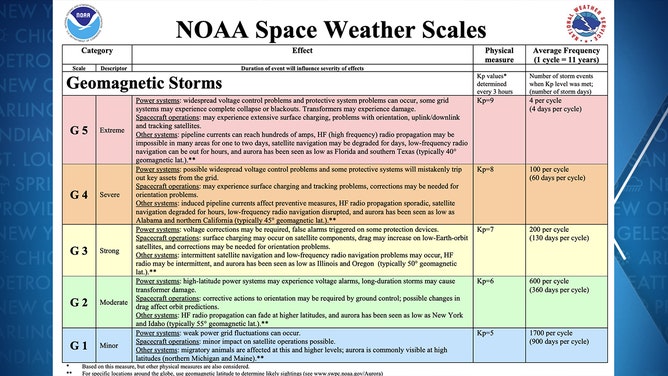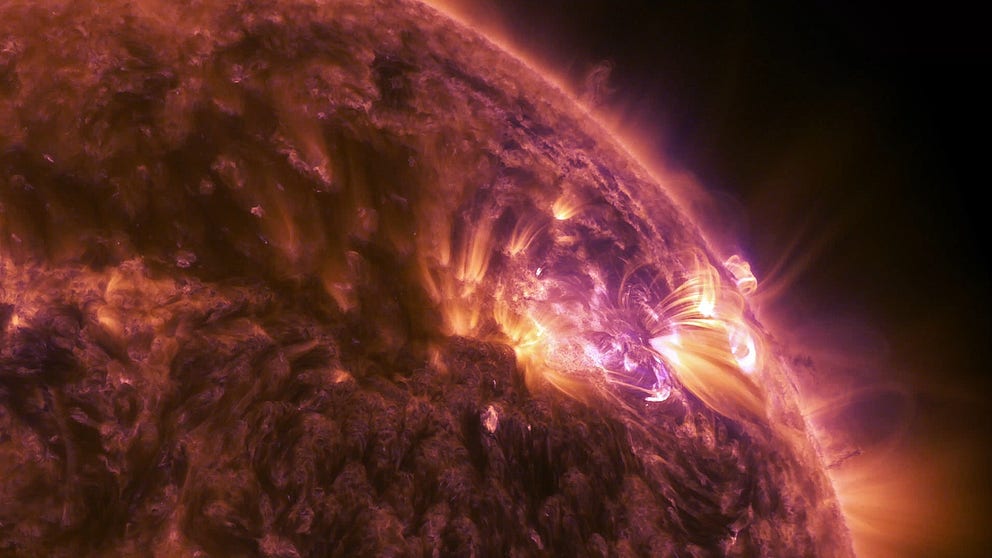These are the 5 categories that measure geomagnetic storms
NOAA has developed a 5-level scale, ranging from G1 to G5, to rate any incoming geomagnetic activity, giving a crucial way to quantify the expected impacts
Space weather explained: What is a solar flare?
The largest explosions in the solar system, a solar flare is an explosion of energy that occurs on the sun’s surface, often appearing as a localized burst of bright light.
To those who operate power and communication systems or just like to chase the Northern Lights, knowing when solar storms will trigger geomagnetic activity is a crucial piece of information.
While geomagnetic storms don't affect human health, these events can affect power grids, communication devices and satellite operations and pose threats to any astronauts currently living in space.
To that end, NOAA has developed a 5-level scale, ranging from G1 to G5, to rate any incoming geomagnetic activity, giving a crucial way to quantify the expected impacts.

(NASA)
G1 - Minor
G1 storms may trigger weak power grid fluctuations and have some minor impacts on satellite operations. But it means a good show of the Northern Lights up in Canada and Alaska. NOAA estimates G1 conditions may be in effect for 900 days per 11-year (roughly 4,000-day) solar cycle.
G2 - Moderate
NOAA suggests high-latitude power systems may experience voltage alarms while long-duration G2 storms may cause transformer damage. HF radio propagation may also fade at higher latitudes.
Views of the Northern Lights eke down into the far northern reaches of the United States. These G2 conditions are around on average for about 360 days of the 11-year solar cycle.
LEARN: WHAT IS THE 11-YEAR SOLAR CYCLE?
G3 - Strong
Once storm levels reach G3, intermittent satellite navigation and low-frequency radio navigation problems may occur, and HF radio may be intermittent, NOAA says. Voltage corrections may be needed on power systems, and false alarms may be triggered on some protection devices.
According to NOAA, the Northern Lights can reach as far south as Washington and Oregon, and Illinois with this kind of storm activity.
Forecasters say these conditions may be observed on average about 130 days per 11-year solar cycle.
G4 - Severe
Power system administrators may be feeling like their hands are getting full as there could be widespread voltage control issues. Satellite and space operations may see surface charging and tracking issues.
Satellite navigation could be degraded for hours, HF radio propagation would be sporadic, and low-frequency radio navigation could be disrupted. On the literal bright side, the Northern Lights may be seen as far south as Alabama and Northern California!
Forecasters estimate these conditions occur on about 60 days total over any given 11-year solar cycle.
G5 - Extreme
Luckily, storm levels of this magnitude are relatively rare. Still, when they occur, power systems may see widespread voltage control problems and some grid systems may experience complete collapse or blackouts, and transformers may suffer damage.
Pipeline currents could reach hundreds of amps, HF radio propagation may be impossible in many areas for 1-2 days, and satellite navigation may be degraded for days as well, NOAA says.
But if the skies are clear, a brilliant and intense display of the Northern Lights may reach as far south as Florida and Texas.
These kinds of strong geomagnetic conditions may only appear around four days per 11-year solar cycle.
You can track the current geomagnetic activity via NOAA's Space Weather Prediction Center.
Geomagnetic storms are expected to become more frequent in the next few years as the sun begins to move into the solar maximum phase of its 11-year cycle.
